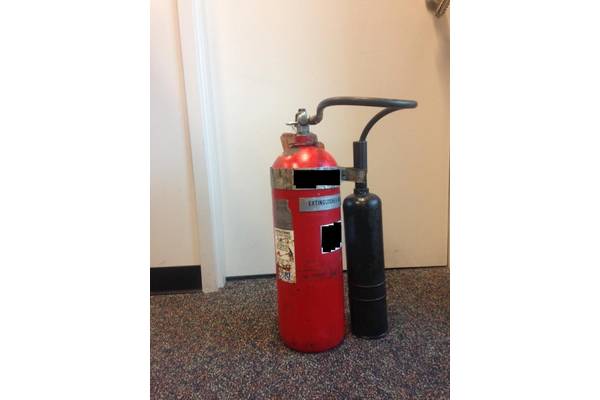

A recent marine casualty investigation of a shipboard fire onboard a U.S. flagged vessel in the Hampton Roads Captain of the Port (COTP) zone raised serious concerns with regards to carbon dioxide (CO2) fire extinguisher servicing. During shipboard fire-fighting operations a crewmember attempted to fight a fire using a 15lb CO2 extinguisher, but the extinguisher failed to properly discharge and only seeped from the neck of the extinguisher. The fire was eventually extinguished by another crewmember using a dry-chemical fire extinguisher.
Following this shipboard fire, U.S. Coast Guard Investigators took the CO2 extinguisher that failed to discharge into evidence and had it analyzed by a fire-fighting servicing agency. It was determined through this analysis that the extinguisher failed to properly function as a result of an obsolete diffuser that was incompatible with standard industry discharge hoses.
The incompatible combination of an obsolete diffuser and a standard industry discharge hose prevented the neck of the diffuser from properly seating when the discharge hose was connected.
The fire-fighting servicing agency that helped examine this CO2 fire extinguisher is currently taking steps to issue an agency wide safety alert requiring fire servicing technicians to replace any diffusers meeting the description of the one provided to the right in Figure 1.
This recent marine casualty highlights the importance for fire-fighting servicing agencies to ensure they are using fire extinguishers and components compatible with one another. The use of components incompatible with one another, which happened in the case described in this safety alert, could have resulted in a much more serious marine incident. To help reduce marine casualties similar to the one described in this safety alert, the U.S. Coast Guard strongly recommends the following measures:
It is requested that any obsolete CO2 fire extinguisher diffusers that are identified as a result of this safety alert be reported immediately to the Sector Hampton Roads Investigations Division by calling (757) 668-5540 or emailing [email protected].
This safety alert has been forwarded the U.S. Coast Guard’s Fifth District and U.S. Coast Guard Headquarters for distribution nationwide. Any questions regarding this alert may be directed to the Sector Hampton Roads Investigations Division using the contact information provided above.

